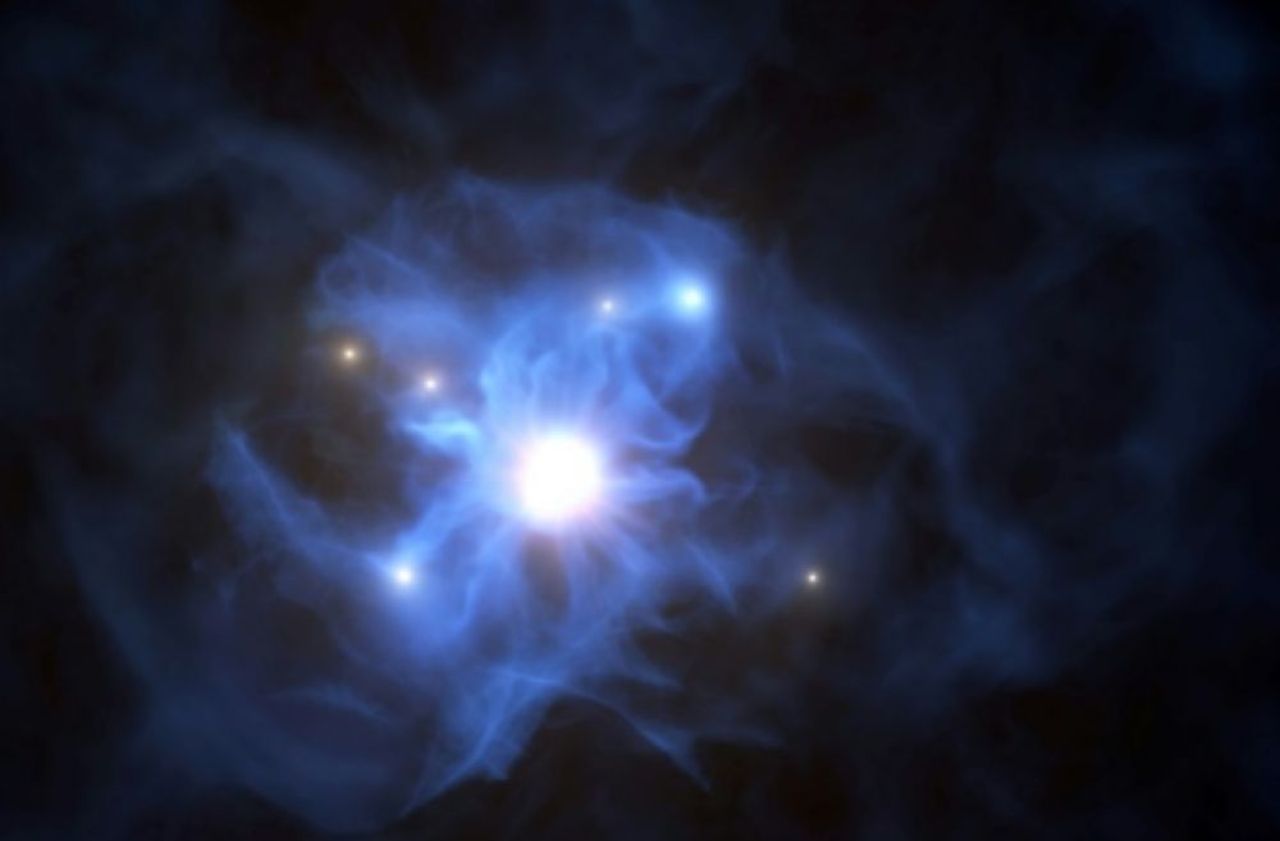“Before, we thought that black holes were small and that they grew over time, over 13 billion years.
But the fact that they were found so early in the history of the Universe shows that they have evolved much faster ”.
With these few words, the astrophysicist Françoise Combes, from the LERMA laboratory of the Paris-PSL Observatory, perfectly sums up the challenges of a resounding study published this Thursday in the journal Astronomy & Astrophysics.
Marco Mignoli, from the Institute of Astrophysics in Bologna (Italy), and his teams, have indeed detected via the European Southern Observatory (ESO) a scene which took place when the Universe did not even have a billion years, or 10% of its current age (13.8 billion years): six galaxies trapped in cosmic filaments similar to a spider's web, caught by a gigantic black hole of a billion masses solar, lurking in the heart of the structure.
The great chaos of the birth of the Universe
These enigmatic cosmic monsters, which would have been born from the collapse of the first stars, are "one of the most difficult astronomical objects to understand", comments Marco Mignoli.
The discovery of an object of this size therefore makes it possible to advance certain hypotheses.
In particular, the study suggests that the immense web of filaments and the galaxies that cluster in it contain enough gas to provide the “fuel” the black hole needs: by devouring the gas from the filaments of the main galaxy - the one that has the most - in the heart of which it lodges, it turns into a cosmic giant in accelerated.
“At the beginning of the Universe, there was much more gas and a much higher density than today,” describes Françoise Combes, 2020 CNRS gold medalist.
It is in these "over-dense" regions, the filaments, where everything happened more quickly, that such objects may have formed.
With the expansion of the Universe, the gas spread, the filaments diluted.
The Milky Way is located in a much less dense region, which the researcher compares "to the countryside" - its central black hole is "only" four million solar masses - compared to the "large agglomerations" that are the clusters of galaxies. .
It is thanks to ESO's Very Large Telescope in Chile (VLT) and its MUSE instrument that these galaxies, among the most difficult to locate, have been observed.
"We think we have only seen the tip of the iceberg, and that these few galaxies discovered around the black hole are only the brightest," concludes Barbara Balmaverde, co-author of the study.
"You can't take a picture of a black hole"



